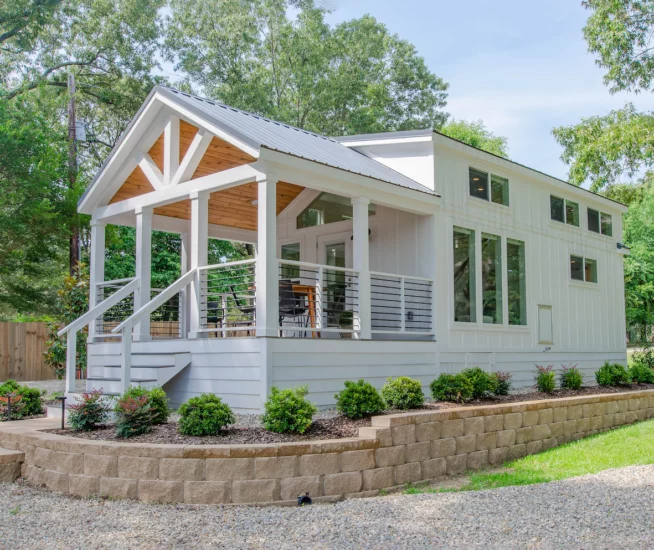Ready To Buy Your New Home? Help Prepare Your Children For This Exciting Time
Moving can be exciting, yet stressful, all on its own but adding children to the experience can be even more so. When moving with kids, it’s important to consider how they will adjust to such a significant change. However, there are lots of ways to help prepare children for a move to ensure a smooth transition for both you and your children. So whether you are looking to build a new modular home or purchase a manufactured trailer home, there are steps you can take to make the move to your new home more comfortable and exciting for the entire family.
Prepare Ahead of Time for The Move To Your New Home
Possibly the most significant advice for preparing you and your children for moving is to be proactive and prepare as much as you can before moving day. Moving day can be very stressful, so it’s essential to try to plan ahead to prevent additional stress for everyone. There are many steps you can take to make moving to a new home easier – with or without children. Moving is always a great excuse to declutter and sort out what you need as opposed to what you don’t. Use the time before your move to sort out what will accompany you to the new home. Garage sales or donations can be a great way to clear out nonessentials; less to move makes for an easier move. Another great way to prep a for a move, especially with children, is to label all the boxes with color-coded tape to help asses where things need to go in the new home. You could use blue tape on the boxes for the children’s room, yellow tape for the kitchen, and so on. While labeling boxes is nothing new when strategizing your move, color coding can make things even easier by designating boxes to specific rooms. Finally, arranging for others to help you on moving day can significantly decrease some of the stress on moving day. Don’t be afraid to ask for help, especially if you have children. Family, friends, or other caregivers can help you manage the excitement (and sometimes chaos) of moving day. There are also many child-friendly moving companies who take special measures to help acclimate children on moving day. While not all of these preparatory tips are child specific, all of them can help decrease the stress of moving day for both you and your children.
Involve Your Children
Among finding a new home, packing, and coordinating your move, it’s easy to overlook children during the moving process. However, children thrive in environments with structure and stability, and during what can be a hectic time during a family move, it’s important to try to maintain that stability. The best recommendation for doing this is to keep your children involved before, during, and after the move. While it may seem like you are keeping your child out of the chaos by excluding them from moving preparations, doing so can making moving and acclimating to the new home difficult for a child. Instead, help your child feel included in the moving process and decision making. Tell your child upfront why you are moving and where – honesty is the game. Explain to your child the benefits of the move to make moving a positive experience. That being said, be receptive to both positive and negative reactions from your child – they will likely experience both.
However, involving your kids in what their new lives will be can make them feel less like the move is being forced upon them. Include your kids when touring your new home or have them approve of the wall color in their room. Children of all ages want be heard, so let them feel like they are participating in the moving process.
Preparing Toddlers and Preschoolers
Toddlers and preschoolers are arguably the easiest age to move with your kids, as children under 6 still have a limited capacity to understand the changes involved. While young, it’s still important to keep children in this age group involved. Be clear and concise when explaining the move to your child. There are several age-appropriate books about moving you can read with your child to help them foster a better understanding of what moving means. Make sure your children know that their belongings are being packed; they are not being thrown or taken away. While decluttering before the move can be beneficial, still hold on to several of your child’s personal effects – a beloved toy, or a favorite blanket – this will help offer your child a sense of security in their new home. Including a new toy within the packing boxes can be a fun surprise for your child, reinforcing the move as a positive change. Arranging for a babysitter or other caregivers to watch your children during the move can help manage the stress of move-in day by knowing your child is being looked after amongst the chaos.
Preparing School-Age Kids
Kids in elementary and middle school may be relatively open to moving, but still require consideration and help throughout the moving transition. As with any age, include your child in the moving process and settling into the new home. At this age, children might be more receptive and excited to be involved with the planning. Before the move, draw up a floor plan of their room to decide together where to put things and how to decorate. Encourage your child to ask questions about the move and their new home and answer them honestly. During move-in day, have a “Moving Day” bag packed in advance with your child’s favorite toys, video games, snacks, and other entertainment. Fortunately, at this age children can entertain themselves pretty efficiently, but only if you prepare them with things and activities to entertain themselves with. Taking a tour of your old home to say goodbye can be a great way to establish closure and open the door to a new home for your child.
Preparing Teenagers
Unlike younger children, teenagers are more likely to rebel against a move. At this age, your child has likely established a life of their own where they’ve been living. They have likely invested a significant amount of time and energy into their own social group, to be a part of different extracurricular activities, or may miss anticipated events within their established life, like a prom or graduation. It’s especially important at this age that you listen to your child’s questions and concerns and respect them. Although blanketed assurances can seem dismissive, it’s crucial that you show your teen the benefits of the move and why it has to happen. Be prepared and don’t overreact if your teen acts angry. Understand they need space and time to process such a drastic change within their life. Plan a going away party for your teen and his or her friends to help give your child some closure within their old life.
After the Move To Your New Home
When moving with kids, the little things matter. After moving, it’s important to keep your children’s usual routines in place – scheduled meals, bedtimes, morning routines, etc. Preserve any family traditions already set in place, such as family dinners, movie nights, etc. Maintaining this structure will help your child acclimate to their new environment more easily. Tour the new area with your children so they can get a sense of their new home; drive around and show them their new school, popular attractions, or other places (or things) to look forward to. Don’t push too hard for your child to make new friends or get involved in extracurricular activities but encourage this and let your child adapt in their own time.




